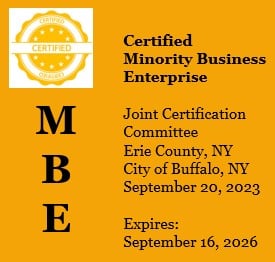Attorneys should have a plan for workplace violence
Irrespective of the coronavirus pandemic, attorneys meet daily with their own clients and opposing clients, both virtually and in person. And that means that they are stepping into the middle of situations which are already highly-charged in the midst of a global crisis.
This article states that there are no statistics to show that lawyers are more at risk of violence than the general public, but that “recent trends in the practice of law indicate that more lawyers are at risk to violent attack than ever before.” The article’s fourth paragraph, which we bolded for emphasis, talks about the increasing tension and feeling of vulnerability among lawyers.
Now is not the time to relegate your safety to the “something I’ll do when I get a chance” category. At a minimum, read this article from the American Bar Association. Create a plan. Generally speaking, even a small amount of preparation will help you abate your natural defense mechanism to freeze, or to rationalize away what you are experiencing during a time of crisis. Plan. And consider contacting an expert for training and a needs assessment.
____________________________
April 02, 2019
American Bar Association
Identifying Violent Clients
Todd C. Scott
Despite the frantic attempts to warn her that she was in imminent danger, Terri Melcher, a lawyer operating a solo family law practice in suburban Minneapolis, Minnesota, never foresaw the violent situation that was about to explode in her law office.
Rushing into her firm and shouting, “You’re not going to mess with me anymore—I’m going to kill you,” Sheikh Nyane, the former spouse of Melcher’s client in a child custody case, chased Melcher throughout her office and began a viscous attack on the attorney that ended after Nyane had stabbed Melcher nearly 30 times in her head, face, and body.
Melcher survived the June 11, 2010, attack—partially because the assailant responded to her pleas to spare her life, and perhaps also because early in the attack, a two-inch tip of the blade used in the assault broke off in her skull, preventing the stabs from penetrating for the duration of the assault. Shortly afterward, Nyane turned himself in to local police, with the knife in hand, admitting to authorities that he was upset with Melcher because she had represented his former spouse in child custody proceedings.
Violent attacks committed against attorneys by clients and related parties enraged over their legal matters is nothing new. Every year, lawyers are attacked with deadly force by assailants who were involved in the attorneys’ legal activities prior to the attack. There are no criminal statistics that show lawyers are in any greater danger than the general public from violent attack; however, recent trends in the practice of law indicate that more lawyers are at risk to violent attack than ever before. As more women enter the practice of law, and more lawyers establish solo practices, lawyers are feeling more vulnerable—especially as highly charged legal disputes involving bankruptcy, child custody, and marriage dissolution are on the rise. Adding to the tension, reduced judicial budgets require parties involved in legal disputes to wait longer than ever before to have their matters heard—greatly testing the patience of a group of legal participants known for having little or no patience. [bolded by STS for emphasis]
Attorneys have taken notice of reports involving dozens of lawyers who were killed or critically injured after being shot, stabbed, or beaten in their office, their home, or in close proximity to their local courthouse. Lawyers often ask what can they do to avoid becoming the victim of a violent attack, or whether exposure to a potentially violent assault is unavoidable and inherent to the practice of law.
“Earlier in my career I worried more about my criminal defense clients,” says solo attorney Ann Barker from Owatonna, Minnesota. But any fears about potential violent acts from her criminal clients diminished as Barker eventually saw that clients have few opportunities to act out violently while in custody or under the constant scrutiny of law enforcement and court personnel. Barker eventually found herself realizing, “I am this person’s last best friend, and they are not about to harm me.”
Now, the individuals that sometimes concern Barker are those involved in family law disputes. Opposing male clients who seem highly emotional and are not represented by counsel worry Barker the most. As a precaution, Barker, who is tall, will usually conduct her business with these parties using an imposing voice and will typically carry herself in a manner that says, “Don’t bother me.” Court deputies are accustomed to her occasional requests for an escort to her vehicle if she is concerned about a party in a legal matter, and she is careful to make sure that the doors to her law office are locked whenever she is alone on the premises.
Barker’s precautions for maintaining her personal safety are based on years of encountering upset individuals embroiled in gut-wrenching legal disputes. Despite having witnessed the different ways various types of people react to their stress and frustration, Barker sees some similarities in certain personality types that at times will put her feelings of caution on high alert.
“The reaction for women being denied access to their children is usually sadness,” says Barker. “For men, it is anger.”
They Attack You for One Reason: to Hurt You
On September 29, 2003, as solo attorney Richard Hendrickson was kneeling and reaching into his briefcase to serve a motion in a Minneapolis courthouse seeking to declare Susan Berkovitz a frivolous litigator, Berkovitz aimed a .38 caliber pistol within inches of the area below Hendrickson’s right ear and fired the gun.
The bullet went into Hendrickson’s neck and bounced off his vertebrae, tearing its way forward and ripping through a secondary artery while leaving a trail of fragments near the base of his skull. Hendrickson fell on his right side and could only lay there helplessly, bleeding, as he heard four more shots that Berkovitz had fired at his client, Shelley Joseph-Kordell, in a nearby women’s restroom.
“The human mind is an amazing thing,” remarks Hendrickson as he recalls the moment he should have died on the 17th floor of the Hennepin County Government Center.
“Your brain tells you, ‘you’re being shot,’” says Hendrickson, and time slowed down to the point where it felt like Hendrickson could count seconds between the moment he saw in his peripheral vision a glimpse of the pink dress Berkovitz was wearing, to when the flash of the muzzle occurred as the gun discharged, to eventually the moment when Hendrickson felt a pain beyond anything he had ever known.
“It was as if [Minnesota Twins great] Harmon Killebrew had stepped up next to me and swung a bat into my neck like he was aiming for the bleachers.”
At about the same time Hendrickson and Kordell were rushed to a nearby trauma center for treatment for their gunshot wounds, Berkovitz was found, unarmed, on another floor of the 24-story county building and apprehended by law enforcement authorities. Hendrickson, who couldn’t speak for several days after the shooting owing to his injuries, inquired in writing about the condition of his client Shelley Joseph-Kordell. When a concerned nurse declined to give him a report on Kordell and offered that he get more rest, Hendrickson knew immediately that his client had been killed.
Hendrickson and Kordell had been worried about Berkovitz long before she attempted to take both of their lives in the downtown Minneapolis courthouse. The months leading up to the shootings were filled with multiple hearings involving the guardianship of Berkovitz’s father. Berkovitz, who was upset that her cousin Kordell had been named conservator/guardian of her father, proceeded to harass and intimidate Kordell and Hendrickson in a variety of ways.
Berkovitz was a serial litigator. In the months prior to the shootings, she filed multiple motions attacking the legitimacy of the Kordell appointment in Ramsey County, where the matter was first venued. Court personnel cringed during her frequent visits to the filing clerk’s office and while attending to the constant needs of the pro se claimant, knowing that her motions would likely be found without merit and summarily dismissed. With every motion she filed and lost, her anger got more palpable. “Her frustration was that she kept losing,” says Hendrickson.
The system was in the process of shutting her off, but it’s a long process. The court began to put more limits on what Berkovitz could do. First she was no longer allowed to conduct business in the probate office, and then she was no longer allowed to call the office at all. After the court declared that she could no longer file anything without prior approval of the assistant chief judge, Berkovitz had had enough and started bringing actions against Kordell and Hendrickson in nearby Hennepin County.
On the day that Shelley Joseph-Kordell entered the Hennepin County Government Center for the last time, she had expressed great reservation about appearing at a harassment hearing requested by Berkovitz that both Kordell and Hendrickson knew was frivolous. Kordell recognized that Berkovitz’s behavior was growing increasingly bizarre, and she suspected that Berkovitz was the cause for the dead animals that mysteriously began appearing in her yard behind her townhouse. Kordell was anxious and requested that a security guard accompany them to the hearing. Hendrickson complied by arranging for an unarmed security escort who met them as they entered the government center.
Upon arriving on the 17th floor where the hearing was to be held, both Hendrickson and Kordell noticed Berkovitz and chose to stand in an area of the hallway out of Berkovitz’s line of vision. Kordell, feeling very agitated, went to a nearby restroom where the security guard stood watch outside the door. Nobody seems to know where the security guard went once the shootings began. Immediately after shooting Hendrickson, Berkovitz entered the nearby women’s restroom and shot Kordell four times, creating six bullet wounds in her arms, head, chest, and neck.
Looking back on the incident, Richard Hendrickson does not feel he could have done anything more to prevent the attack from occurring.
“Over the course of my law practice, I had seen a number of Susan Berkovitz types—irrational, unstable, mentally ill,” says Hendrickson. He saw it as part of his job to advise his clients that dealing with bizarre and unstable people is sometimes part of the process, and the way to handle it was to continue with the legal proceedings and let the court decide.
“Besides,” says Hendrickson, “What could we do about it? We would have liked to have her committed, but the sense was that she never really crossed a line.”
Hendrickson does, however, recognize bizarre client behavior much sooner now than he did in the past, and he takes it much more seriously.
“Now,” Hendrickson adds, “an attorney also has to know when to get out of a situation.” He acknowledges that nearly every attorney will routinely be required to deal with “goofy” individuals, but the client is depending on the attorney’s gut instinct to recognize when the warning signs have reached a dangerous level. “Trust your gut,” says Hendrickson. “If it’s not right, or scary, or beyond bizarre, don’t dismiss it.”
Hendrickson always knew that he would return to the practice of law after recovering from his injuries. Lawyers concerned about angry and intimidating parties will occasionally call Hendrickson for advice. He reminds lawyers that the world is full of dangerous people. Although Berkovitz had a range of emotional problems that led to her committing the assault, there were also a few strangers who attended the post-trial motions simply to show support for Berkovitz’s defense. The reasoning of the defense was that Hendrickson deserved to be shot because, as a lawyer, “He had it coming.”
“They attack you for only one reason. To hurt you,” says Hendrickson.
Defusing a Dangerous Situation
The attack on Richard Hendrickson and his client Shelley Joseph-Kordell was unusual in that it was committed by a woman. According to data by the U.S. Bureau of Justice Statistics, personal assault crimes are typically committed by men ages 15 to 30. What wasn’t unusual about it was that a handgun was used in the assault. Handguns have replaced edge weapons, such as knives and razors, as the most common weapon used by a perpetrator in an assault.
Hendrickson, who doesn’t like guns, feels that a handgun in his possession at the time of his assault would have done nothing to aid in his defense. Instead, Hendrickson believes that lawyers have a better chance of avoiding an assault by a violent client if they recognize the potential for danger early on and steer clear of the situation.
Mary Brandl, an educator in self-defense and co-author (with Anita Bendickson) of the book Scenarios in Self-Defense, agrees with Hendrickson. To Brandl, self-defense involves employing any available means for safely avoiding or escaping a potentially dangerous encounter. It needn’t involve fighting or a direct physical encounter. The goal of self-defense is not to “win,” but rather to get away from a potentially dangerous situation safely.
“Without realizing it, people take on more risks based upon a false sense of their past success,” says Brandl. Lawyers such as Hendrickson might have taken on cases thinking, “This doesn’t feel right, but I’ve handled tough cases like this before.” According to Brandl, legal professionals need to assess the level of danger in a matter by “judging what is going on in that situation, not how it compares to your past success.”
Brandl, a fourth-degree black belt in shotokan karate, began developing a specialized self-defense course for legal, insurance, and government professionals when she realized that in many occupations, work involving dangerous confrontation was sometimes the norm.
“You just can’t teach an individual involved in child welfare enforcement to leave every time they are involved in a confrontation,” says Brandl. Brandl also works with health inspectors, insurance claims adjusters, child support enforcement officers, financial assistance representatives, and others in occupations where giving someone bad news is frequently part of the normal routine.
Brandl’s self-defense advice focuses on both nonverbal and verbal tools to counter the escalation that is common to nearly all serious confrontations. Brandl especially advises professionals to understand the importance of nonverbal tools for de-escalating confrontation, as most human communication does not involve words and is more based on how we focus our eyes and control our body movement, and how well we are paying attention to the feelings of the situation.
Tools for Cooling Confrontation (adapted from Scenarios in Self-Defense, BPS Communications, 1989; used with permission from the co-author, Mary Brandl). There are certain elements of escalation common to nearly all serious confrontations. The following tips from Scenarios in Self-Defense, by Mary Brandl and Anita Bendickson, are designed to counter these elements and make it more difficult for a confrontation to keep escalating.
• Strong body language. Have a strong “base” position (i.e., with legs slightly apart so the body forms a pyramid) where it is easy to take a deep breath.
• Tone of voice. A quieter voice when trying to keep a situation from escalating is usually the best course. In a situation that has escalated to extreme, sudden loud behaviors might startle the aggressor enough to buy you some time and enable you to get to safety.
• Emphasis of voice. Be aware of what you are saying and the possible negative effects from too much use of a questioning voice. If a verbal response is called for, using commands and statements in a firm but non-challenging tone is perhaps your most valuable response for ending a situation.
• Distance. It is very important to keep distance from the aggressor. Attackers need to be close to attack and will use ploys to get within “handshake distance.” Moving or backing away does not have to look like you are backing down.
• Never turn your back on a hostile person. Be aware that it is easier for an upset person to physically escalate if you have your back to him or her.
• Oblique angles. To approach or stand straight-on toward a person can have a very different effect than using a slight angle. Be aware of the situations where each might be useful and how a straight-on approach can appear as a challenge.
• Eye contact. To look at someone in a way that makes them feel acknowledged without being too intrusive or possibly provoking, use a more diffuse kind of eye contact. You can do this by looking at the more general area of the person’s face rather than looking just at the eyes.
Brandl’s number-one rule for cooling off a difficult situation is to avoid all arguments. Sometimes just restating the same thing during a difficult conversation with slight variations is the best course; in a confrontation, the aggressor often tries to get a rise out of you in order to draw you into an argument.
If you need to engage in a discussion with someone bent on having a confrontation, Brandl recommends talking about common goals with the aggressor and redirecting his or her thoughts by making suggestions or asking a question. Acknowledging the problems of aggressors can be done by simply restating their problem back to them, and sometimes this can go a long way toward easing a difficult situation.
If you think you may be in a situation where you are about to be attacked, Brandl advises using tactics that disrupt the attack scenario. Most attackers have developed a scenario—either consciously or unconsciously—of how their attack will proceed. By disrupting the attacker’s scenario, you put yourself on even ground with the attacker, and you take away his or her assurance that the attack is going well. Assessing the seriousness and purpose of the attack will help you determine what means to use to disrupt the attack—whether physical, verbal, or other forms of attack resistance.
Plan what you would do if you were cornered in your office by an angry, confrontational client. It is important to prepare an escape path and plan how to contact security and notify others in the office that a dangerous situation is erupting. Draft a plan to secure the safety of everyone in the office, and communicate this plan to all who work on-site. It is essential that everyone knows the plan to prevent chaos when a dangerous situation unfolds.
“The First Thing We Do, Let’s Kill All the Lawyers.”
This immortal line from Shakespeare’s Henry VI, Part 2, indicates how long-standing and deeply embedded is the idea that society would be better off if all lawyers were dead. Although legal professionals are usually accustomed to lawyer jokes, websites such as www.deadlawyers.com—which features a smiley logo accompanying news about murdered attorneys—are sobering reminders of the extent to which some individuals will go to intimidate lawyers.
Lawyers must look out for each other’s safety and offer guidance and advice, understanding that any one of them could be in the same frightening situation involving an enraged client. Looking out for the safety of our legal colleagues is crucial for the welfare of lawyers, their clients, and all with whom they work.




